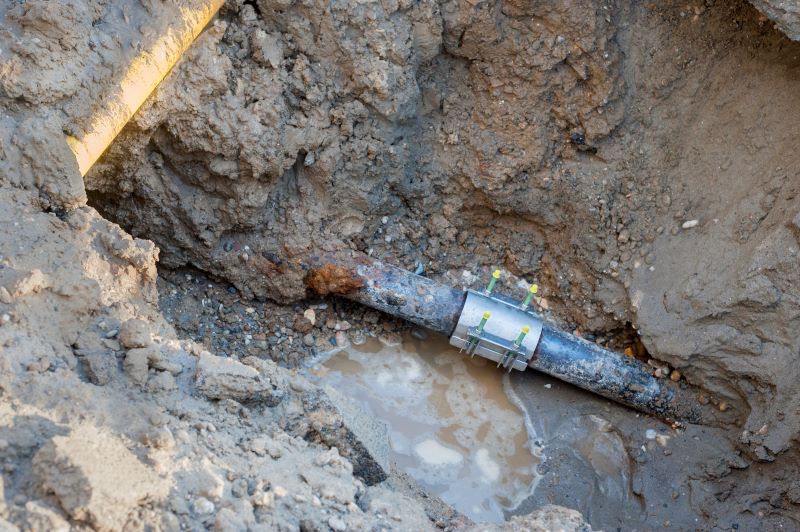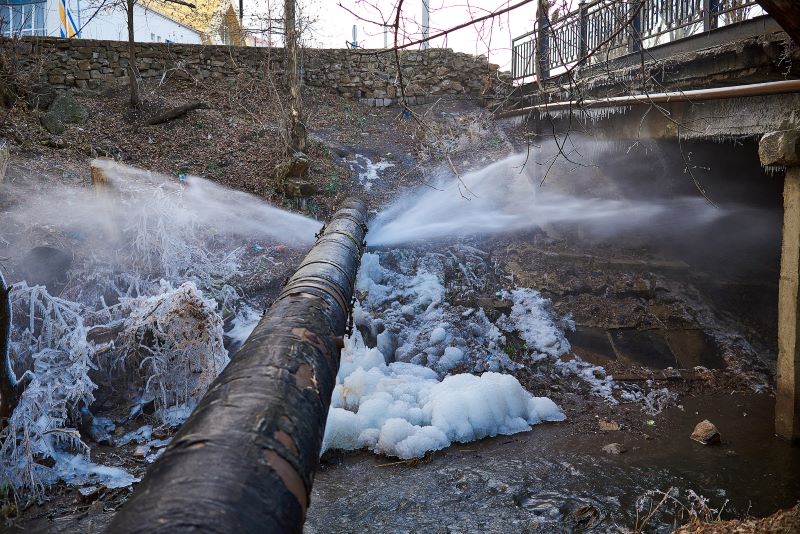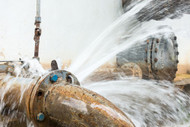Protect Your Water Against Aging Infrastructure
Posted by Joel Pelina on Oct 7th 2022
America’s water infrastructure is vast, spanning millions of miles and serving hundreds of millions of people. It has grown over two and a half centuries, expanding as the population of the country has grown and expanded across the continent. Yet the past 50 years has seen a disturbing drop in water infrastructure investment, despite the fact that water infrastructure itself is aging and newer contaminants are being discovered. The state of the country’s aging water infrastructure means that people need to consider taking steps on their own to protect the water in their homes.
The State of America’s Water Infrastructure
- America’s water distribution infrastructure consists of roughly 2.2 million miles of underground pipes.
- Water
infrastructure can be sub-categorized into three parts:
- Storage, such as reservoirs and dams.
- Conveyance, such as the water pipes, sewers, and pumps.
- Treatment systems, such as water treatment and water recycling plants.
- Each of these components is aging and in danger of failing.
- Despite a growing population and increased water needs, the federal government’s share of spending on water infrastructure fell from 63% in 1977 to 9% of total capital spending in 2017. Since the 1980s, most public spending or investment in water infrastructure – two-thirds – has come from state and local governments.
- Estimates predict that by 2029, investment toward drinking water and wastewater infrastructure will fall short by $434 billion of required funds.
- The continuous underfunding of water infrastructure has led the American Society of Civil Engineers to evaluate the U.S.’s water infrastructure with a D grade for over a decade.

Aging Infrastructure and Workforce
- Water infrastructure was initially designed to last 75-100 years, but most of this infrastructure was built almost 100 years ago.
- Estimates predict that between 2016 and 2026, 10.6% of the water sector workforce will retire or transfer, with some utilities expecting half their staff to retire within the next five to ten years.
Breakdowns in Water Infrastructure
- There is a break in a water main every two minutes.
- Water main breaks lose roughly 6 million gallons of treated water each day.
- According to Water Finance & Management, “Between 2012 and 2018, the rate of water main breaks in the United States rose by 27 percent to roughly 300,000 breaks per year— equivalent to a break more than every two minutes.”
- Unlike major catastrophes, like the Flint, Michigan lead contamination crisis, breakdowns in water infrastructure can be chronic problems until the aging pipes are identified and either repaired or replaced.
- Aging water treatment plants may not be able to adequately treat more recent contaminants of concern such as PFAS and algal blooms.
- Between 1980 and 2015, violations of the U.S. Safe Drinking Water Act have more than doubled.

Potential Large-Scale Solutions to Aging Water Infrastructure
- A minimum of triple the level of current funding is needed for the maintenance and upgrade of water infrastructure.
- Agencies need to start utilizing technologies such as machine learning and real-time data sensors to monitor and manage the status of pipelines and utilities.
- It may be effective to use technologies that are beneficial yet cost-effective to treat large volumes of water, such as led water disinfection lamps.
- An aging workforce means it is imperative for utilities to find, train, and retain more workers to oversee water infrastructure.
Point-of-Use Water Filtration May Be a Necessity for Every Household
Aging infrastructure is prone to breakdowns, prone to both internal and external contamination, and is of questionable effectiveness at rendering drinking water safe from some of the newer pollutants in the environment. The fact that American water infrastructure is chronically underfunded means that this is a problem that will not be resolved any time soon, and will require a massive amount of investment just to maintain, let alone upgrade or modernize. It is apparent that the best way for individuals and families to ensure the safety and quality of their drinking water is with the use of a point-of-use water filtration system in the home. An effective water filter can protect your water from a wide range of potentially harmful contaminants such as lead, mercury, asbestos, microcystin (toxic algae), PFAS, and even bacteria and viruses. Multipure offers a selection of home water filtration systems to fit your needs, and ensure that you have cleaner, safer, healthier water for cooking, preparing foods, and drinking. For Life. For You.
References
- “Aging Infrastructure.” WSSCWater. March 10, 2022. https://www.wsscwater.com/what-we-do/major-projects/pipes-and-infrastructure-improvements-and-maintenance/aging
- “Drinking Water.” Report Card for America’s Infrastructure. Last accessed September 23, 2022. https://infrastructurereportcard.org/cat-item/drinking-water-infrastructure/
- Lloyd, Robin. “A Growing Drinking Water Crisis Threatens American Cities and Towns.” Scientific American. September 9, 2022. https://www.scientificamerican.com/article/a-growing-drinking-water-crisis-threatens-american-cities-and-towns/
- “New report offers grim details on underinvestment in U.S. water infrastructure.” Water Finance & Management. August 26, 2020. https://waterfm.com/new-report-offers-grim-details-on-underinvestment-in-u-s-water-infrastructure/
- Sedlak, David. “How Development of America's Water Infrastructure Has Lurched Through History.” The PEW Charitable Trusts. March 3, 2019. https://www.pewtrusts.org/en/trend/archive/spring-2019/how-development-of-americas-water-infrastructure-has-lurched-through-history

